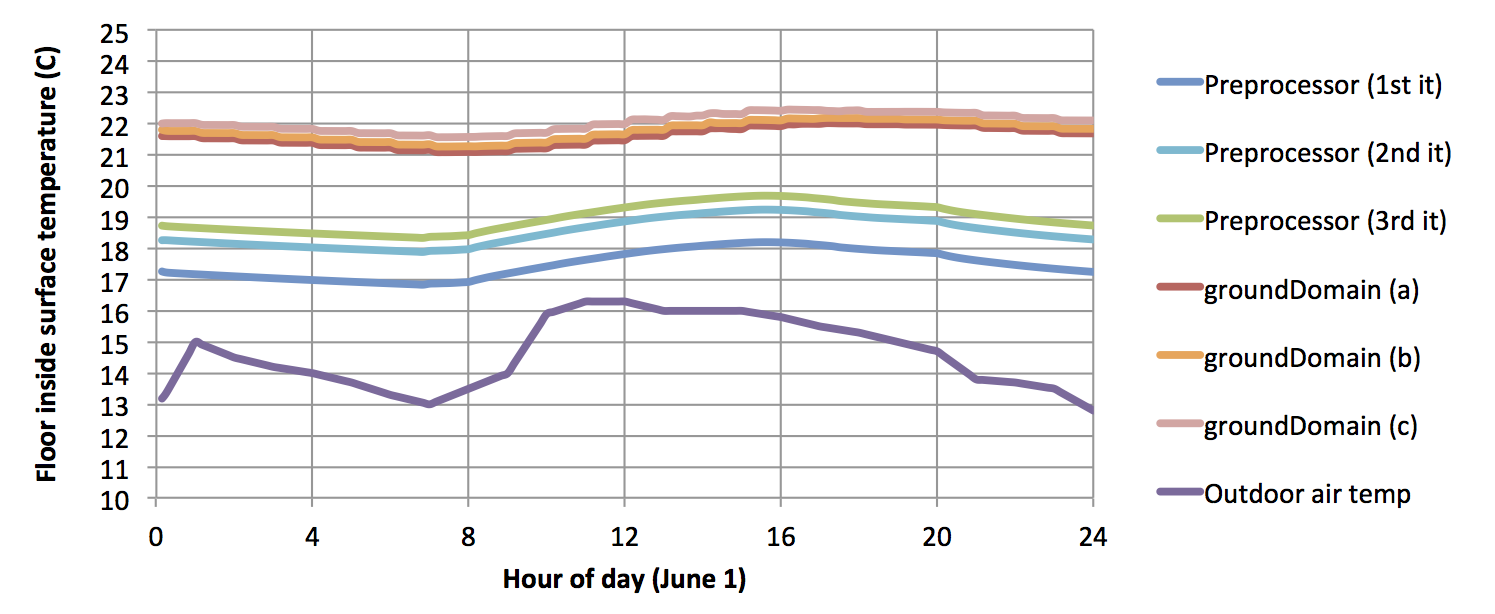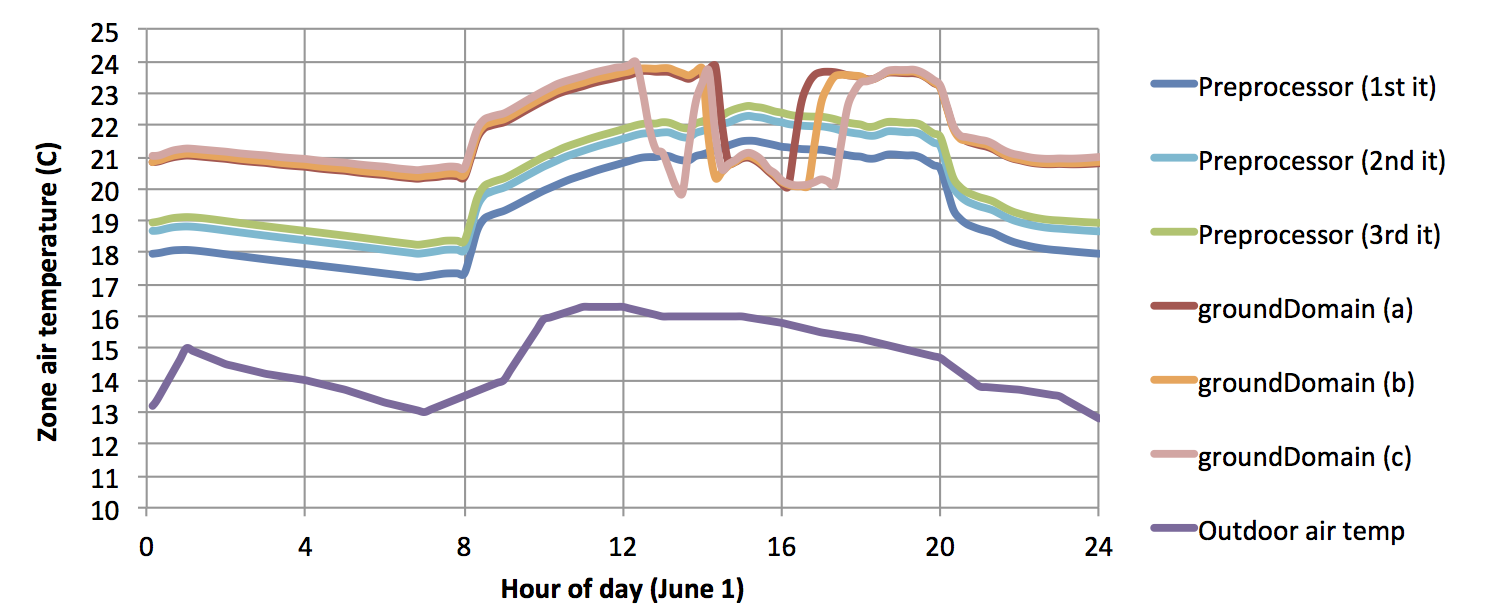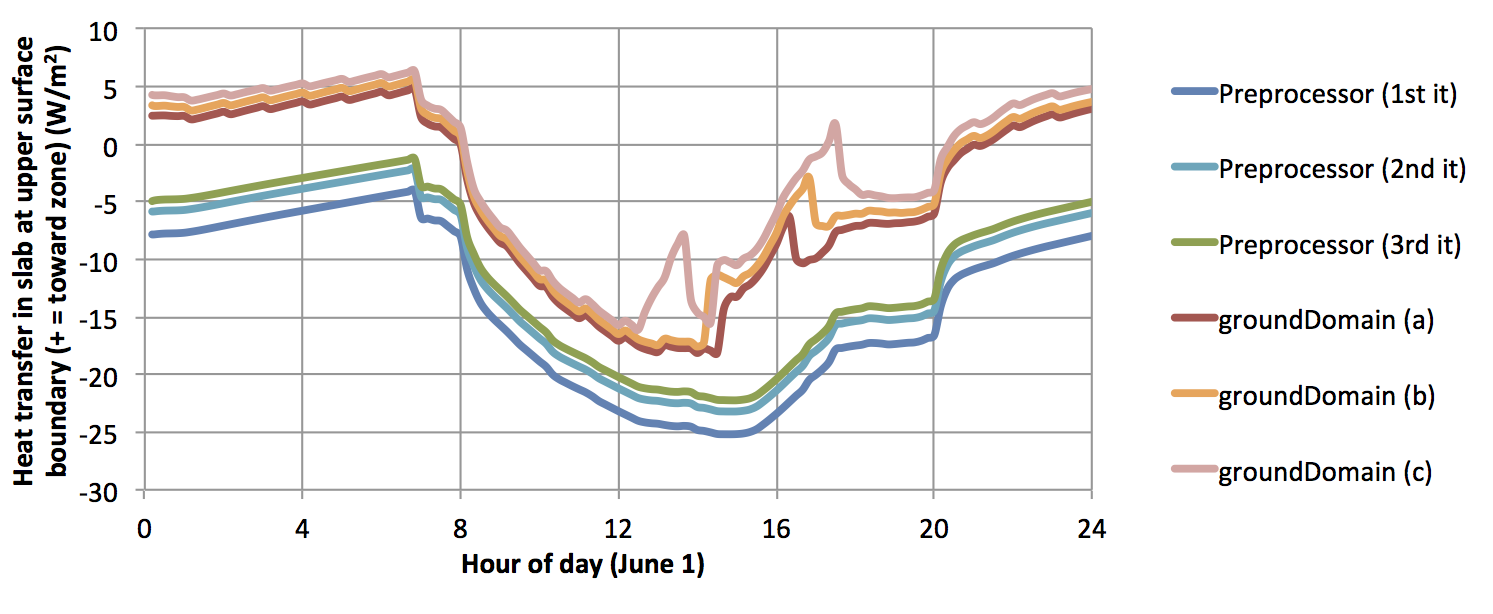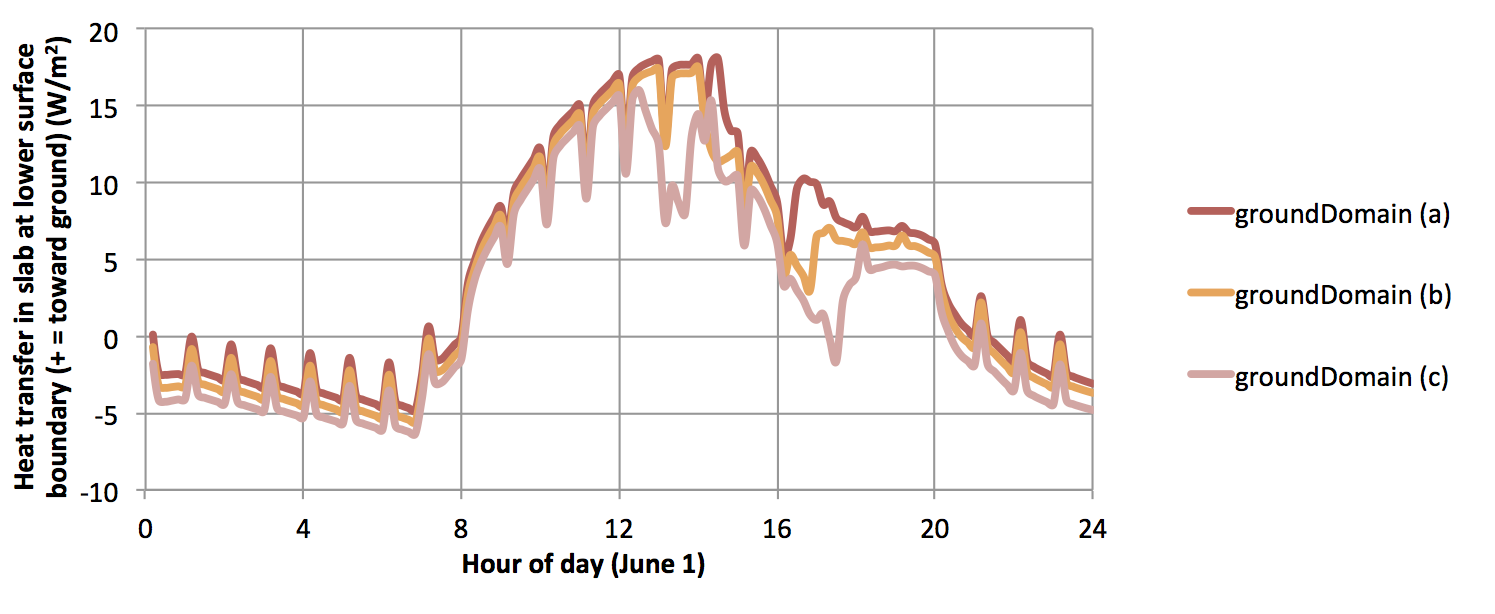First time here? Check out the Help page!
 | 1 | initial version |
I have conducted a test. It is a naturally ventilated building in Curitiba, Brazil, equivalent to climate zone 3 in the U.S. The winter day June 1 is shown. The soil parameters are those from the GHT slab defaults (model assumptions and parameters listed at bottom).
I went through three iterations of the preprocessor (recalculating average zone temps and then putting those in as inputs to the GHT slab model). I also tried the groundDomain model with:
for (a) and (b) I took the site ground temperature from the 0.5 m deep monthly values in the weather STAT file.
There were only very small differences among the three groundDomain variations. However, the groundDomain and slab preprocessor results were quite different. The shapes were similar, but with much higher temperatures with groundDomain. Here are the floor surface temperatures:

Again, consistent with the ground being warmer. (Multiple iterations of the preprocessor move towards a warmer floor surface temp, but it's clear they were converging well cooler than groundDomain.) The difference is reflected in a consistent 1.5 - 2 °C increase in zone air temp with the groundDomain model:

The shape of the groundDomain curves in the middle of the day is because the building is naturally ventilated, and with less heat sunk to the ground the zone operative temperature gets warm enough that the windows are opened--expected behavior, not really relevant here. In terms of heat transfer in the slab itself, the models are quite different:

Again, same shape, but a significant offset (plus, again, the expected and not-relevant-here difference due to the change in zone air temperature resulting from window opening being triggered). Here negative indicates heat is being conducted away from the top of the surface, i.e., heat is being sunk to the ground.
Is this behavior what you would expect based on your knowledge of the difference between the two models? For a conditioned building, the difference might be a change in load, but for a passive building trying to avoid the need for AC a change in temp of 2 °C can be very, very significant.
Secondary issue: FYI, from this test, I did not see any greater variability with the groundDomain method. I think what my colleague who told me that might have noticed was a lot of spiking if you look at the flow on the bottom of the zone floor construction (the thin piece of material, in this case 1 cm of concrete):

Note this spiking is exactly every hour and not really reflected in the heat going into this thin construction, but only in the heat going out. Seems not correct--I might expect step behavior from using an hour calculation timestep, but not spikes like this. If I change the calculation timestep to "timestep" from "hourly" the issue goes away.
Model assumptions: The slab material (Exterior Floor - Slab Bot) is 14 cm, and the zone floor is 1 cm. With the preprocessor, I used a single slab of 15 cm. There is no insulation. I kept things I didn't know at defaults. Again, soil parameters are the defaults when using the GHT preprocessor. Here is the ground domain object I used:
Site:GroundDomain:Slab,
GroundDomainSlab, !- Name
10, !- Ground Domain Depth {m}
0.54, !- Aspect Ratio
5, !- Perimeter Offset {m}
1, !- Soil Thermal Conductivity {W/m-K}
1200, !- Soil Density {kg/m3}
1200, !- Soil Specific Heat {J/kg-K}
30, !- Soil Moisture Content Volume Fraction {percent}
50, !- Soil Moisture Content Volume Fraction at Saturation {percent}
, !- Kusuda-Achenbach Average Ground Surface Temperature {C}
, !- Kusuda-Achenbach Average Amplitude of Ground Surface Temperature {deltaC}
, !- Kusuda-Achenbach Phase Shift of Minimum Ground Surface Temperature {days}
0.4, !- Evapotranspiration Ground Cover Parameter
GroundCoupledOSCM, !- Slab Boundary Condition Model Name
InGrade, !- Slab Location
Exterior Floor - Slab Bot, !- Slab Material Name
No, !- Horizontal Insulation
, !- Horizontal Insulation Material Name
Full, !- Horizontal Insulation Extents
, !- Perimeter Insulation Width {m}
No, !- Vertical Insulation
, !- Vertical Insulation Material Name
, !- Vertical Insulation Depth {m}
Hourly; !- Simulation Timestep
As always, thanks for any insights people have.
